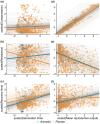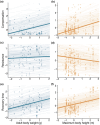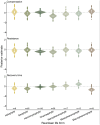Correction to 'Life history mediates the trade-offs among different components of demographic resilience'
- PMID: 39039762
- PMCID: PMC11472290
- DOI: 10.1111/ele.14468
Correction to 'Life history mediates the trade-offs among different components of demographic resilience'
Figures







Erratum for
-
Life history mediates the trade-offs among different components of demographic resilience.Ecol Lett. 2022 Jun;25(6):1566-1579. doi: 10.1111/ele.14004. Epub 2022 Mar 25. Ecol Lett. 2022. PMID: 35334148 Free PMC article. Review.
Publication types
LinkOut - more resources
Full Text Sources

